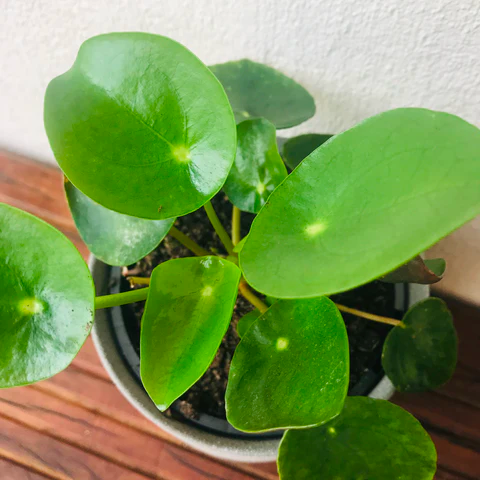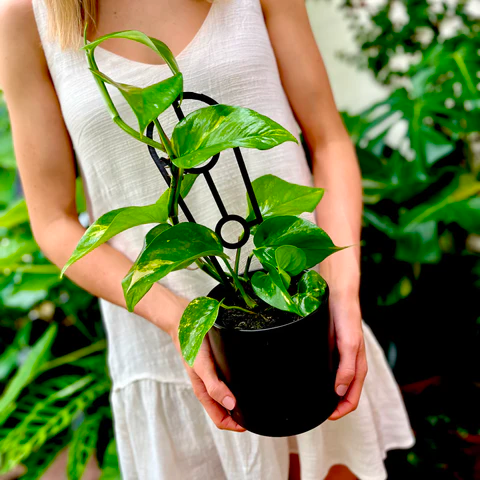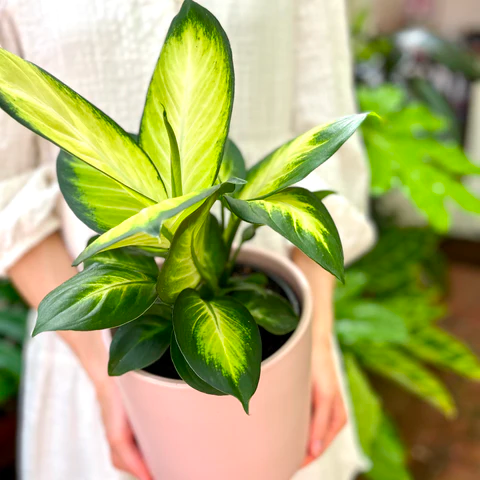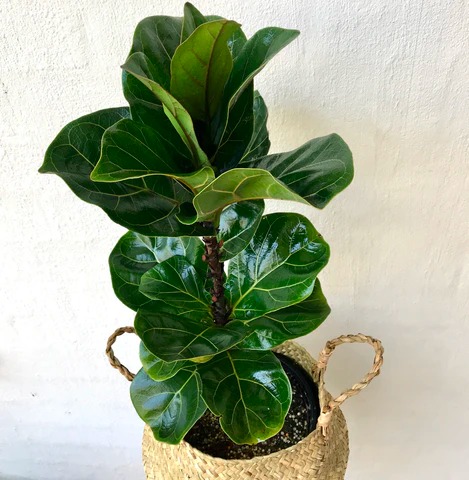Christmas +
Christmas
Mothers Day Gifts
Valentines Gifts
Fathers Day Gifts
Christmas Gifts
Sympathy Gifts
Mum+Baby Gifts
Birthday Gifts
Plant Lover Gifts
Flowering Plant Gifts
Food + Drink Gifts
Thank You Gifts
Welcome + Farewell Gifts
Get Well Soon Gifts
House Warming Gifts
Wedding Gifts + Anniversary Gifts
Edible Plant Gifts
Succulent Plant Gifts
Plants +
Christmas
Mothers Day Gifts
Valentines Gifts
Fathers Day Gifts
Christmas Gifts
Sympathy Gifts
Mum+Baby Gifts
Birthday Gifts
Plant Lover Gifts
Flowering Plant Gifts
Food + Drink Gifts
Thank You Gifts
Welcome + Farewell Gifts
Get Well Soon Gifts
House Warming Gifts
Wedding Gifts + Anniversary Gifts
Edible Plant Gifts
Succulent Plant Gifts
Gifts +
Christmas
Mothers Day Gifts
Valentines Gifts
Fathers Day Gifts
Christmas Gifts
Sympathy Gifts
Mum+Baby Gifts
Birthday Gifts
Plant Lover Gifts
Flowering Plant Gifts
Food + Drink Gifts
Thank You Gifts
Welcome + Farewell Gifts
Get Well Soon Gifts
House Warming Gifts
Wedding Gifts + Anniversary Gifts
Edible Plant Gifts
Succulent Plant Gifts
Hampers+
Christmas
Mothers Day Gifts
Valentines Gifts
Fathers Day Gifts
Christmas Gifts
Sympathy Gifts
Mum+Baby Gifts
Birthday Gifts
Plant Lover Gifts
Flowering Plant Gifts
Food + Drink Gifts
Thank You Gifts
Welcome + Farewell Gifts
Get Well Soon Gifts
House Warming Gifts
Wedding Gifts + Anniversary Gifts
Edible Plant Gifts
Succulent Plant Gifts
Occasions+
Christmas
Mothers Day Gifts
Valentines Gifts
Fathers Day Gifts
Christmas Gifts
Sympathy Gifts
Mum+Baby Gifts
Birthday Gifts
Plant Lover Gifts
Flowering Plant Gifts
Food + Drink Gifts
Thank You Gifts
Welcome + Farewell Gifts
Get Well Soon Gifts
House Warming Gifts
Wedding Gifts + Anniversary Gifts
Edible Plant Gifts
Succulent Plant Gifts
Corporate+
Christmas
Mothers Day Gifts
Valentines Gifts
Fathers Day Gifts
Christmas Gifts
Sympathy Gifts
Mum+Baby Gifts
Birthday Gifts
Plant Lover Gifts
Flowering Plant Gifts
Food + Drink Gifts
Thank You Gifts
Welcome + Farewell Gifts
Get Well Soon Gifts
House Warming Gifts
Wedding Gifts + Anniversary Gifts
Edible Plant Gifts
Succulent Plant Gifts
More+
Christmas
Mothers Day Gifts
Valentines Gifts
Fathers Day Gifts
Christmas Gifts
Sympathy Gifts
Mum+Baby Gifts
Birthday Gifts
Plant Lover Gifts
Flowering Plant Gifts
Food + Drink Gifts
Thank You Gifts
Welcome + Farewell Gifts
Get Well Soon Gifts
House Warming Gifts
Wedding Gifts + Anniversary Gifts
Edible Plant Gifts
Succulent Plant Gifts
Delivery
Plant Care
Enter some text
So you have received a lovely plant from us. What now you say?
Don't worry if you new to plants, we are here to help.
Call, text or email us if you have any questions, but here's a little general guidance to start you out (More specific information about each indoor plant species can be found below)
Position: Find a good spot for your plant, each plant has varying needs from sunlight levels (more info below), but generally keep away from direct sunlight (north facing windows). If the plant's foliage grows towards the light, turn the pot 180degrees to even out the growth direction.
Feeding and Watering: Your indoor plant will have been recently fed and watered, so put your feet up and relax for a bit and admire your new indoor plant, nothing needs to be done in haste. More detailed information on watering can be found here:
Repotting: There is no need to repot your plant, it is currently in the perfect size nursery pot for the size of the plant/ roots. Repot when you see roots coming out the base holes or the plant is looking lacklustre and has stopped growing. Then only plant up one size of pot - eg 12cm - 14cm, 18cm-20cm. Repotting is best done in early spring before the plant kicks into it's main growth period. Use a premium potting mix.
A-Z of plant care information
Common Name / Latin Name
ALUMINIUM PLANT/ PILEA CADIEREI
Showy, silver-splashed leaves make the Aluminium Plant a stunning and popular house plant. Silvery streaks mark each leaf, adding a dramatic metallic design to its quilted texture. These unusual patterns give this plant another common name, watermelon pilea
Position -Keep your Aluminium Plant in bright light, the foliage will lose its variegation if the light level is too low. It's a good idea to place it in bright, filtered sunlight all year-round. The stems will stretch towards the light, so turn the pot to ensure upright foliage.
Water - Water sparingly because it won't tolerate soggy soil which causes root rot. Aim to keep the soil lightly moist during the growing season.
Tips - As it matures your Aluminium Plant will drop its lower leaves, this is normal, but cut back older stems in spring to prevent the plant looking “leggy” and to encourage fresh growth.
Safety - Non-Toxic to dogs and cats, safe for them to be around.
Difficulty - Medium

ANTHURIUM
A spectacular indoor plant, with lush tropical leaves and big bold waxy blooms in a range of bright colours that last for weeks.
Position - Anthuriums will adapt to most lighting conditions, but a brighter spot (away from direct sun) with produce more flowers. They like to be kept warm and humid.
Water - Water your Anthurium modestly or when the soil is dry, too much water can cause root rot
Tips - They enjoy high humidity so the bathroom is a good position to have them, or they can be misted regularly.
Safety - Will cause mouth and digestive irritation if consumed by pets or humans. The best practice is always to keep houseplants out of reach of small children and pets
Difficulty - Easy Care.

ARROW HEAD PLANT/ SYNGONIUM
This is a stunning indoor plant with bright variegated arrow shape leaves with a variety of different foliage patterns in greens, pinks and olive colours, striped and marbled. Guaranteed to brighten up you home.
Position - A native to tropical rainforests in South America Syngonium's like a warm bright spot without any direct sunlight and enjoys humidity (mist now and then to replicate the conditions of the Amazon rainforest!)
Water - Keep soil moist but not soggy and allow to dry out in between waterings. (Cut back watering in Winter and become more frequent during the warmer months)
Tips - Syngoniums may need a support as they start to climb, or cut back every now and again to retain a lush/low shape. They easily propagate in water. That means you can grow lots of new plants from just a few cuttings!
Safety - Toxic if consumed by pets or humans. The best practice is always to keep houseplants out of reach of small children and pets
Difficulty - Easy Care

BAT FLOWER/ TACCA CHANTRIERI
An exciting clump forming indoor plant that is a bit different because it bears exotic looking dark brown flowers with bracts that resemble the wings of a bat! When not in flower, the bat plant doesn’t disappoint, as its glossy, crinkly foliage takes centre stage. An amazing specimen for any plant lover looking to add some wow factor to their collection
Position - They like a warm, sheltered, shady position with high humidity (mist regularly).
Water - Regular watering required. However, they are dormant in the cooler months so leave them to dry out at this stage.
Tips - Fertilize regularly and lightly during the growing season.
Safety - Toxic if consumed by pets or humans. The best practice is always to keep houseplants out of reach of small children and pets
Difficulty - Tricky - Hard in cooler climates

BIRDS NEST FERN/ ASPLENIUM NIDUS
This Australian native fern originally found in the rainforests in the northern tropics, offers stunning structural, glossy bright green leathery leaves. The Birds Nest fern is a must have for any seasoned plant lover or those new to the world of indoor plants.
Position - This indoor plant will not require a lot of attention, simply place in a shady spot in your home and keep the humidity levels high by misting from time to time (it loves being in bathrooms). Keep away from direct sunlight which will burn the leaves of the Birds Nest Feern.
Water - They like a good amount of water so keep moist but avoid watering directing into the crown (centre) of the leaves, so watering from below or directly into the surrounding potting mix.
Tips - Liquid feed your Bird Nest Fern at half strength during the growing season (the warmer months) to keep the foliage unfurling with curly new fronds.
Difficulty - Medium

CALATHEA FREDDIE
This indoor plant has stunning feature foliage, a low growing Calathea with a compact habit with narrow green leaves with dark green veins. Ideal for small pots and life indoors in our homes.
Position - Calatheas can tolerate fairly low light levels, but move to a brighter spot to get better colouring on the leaves, avoid direct sun.
Water - Water regularly or when the indoor plant ‘tells’ you its thirsty by looking a little droopy or the leaves curl up. Water more during the hotter months and less in the cooler months.
Tips - Calatheas enjoy high humidity so the bathroom is a good position to have them, or they will enjoy a regularly misting. The edge of the leaves can become brown if the air around them is too dry, but just trim this off and a new leaf will be along sooner or later!
Safety - Non-Toxic to dogs and cats, safe for them to be around.
Difficulty - Medium

CALATHEA ORBIFOLIA
Wow look at these beautiful silky green round stripy leaves, that unfurl from this indoor plant! This Calathea really makes an impact.
Position - Happy in a shady spot in the house.
Water - Moderate water consumption (wait until the soil is dry or the plant droops a little between watering). Ease off the watering in Winter. In the Summer it will take a bit more water.
Tips - Calatheas love heat and humidity and will pump out new leaves when happy! Liquid feed during the warmer months to encourage new growth. Trim off any browning edges of the leaves to keep it looking its best.
Safety - Non-Toxic to dogs and cats, safe for them to be around.
Difficulty - Medium

CALATHEA ZEBRINA
This indoor plant offers lush green velvety leaves that unfurl from the centre, revealing their “zebra-like” markings.
Position - This indoor plant likes bright indirect light, keep away from harsh sun rays that will burn the leaves easily
Water - Keep moist, so be sure to water when the top inch of soil becomes dry. Just don't ever leave the plant pot sitting in water, always make sure excess water has drained away.
Tips - Calatheas enjoy high humidity so the bathroom is a good position to have them, or they will enjoy a regularly misting. The edge of the leaves can become brown if the air around them is too dry, but just trim this off and a new leaf will be along sooner or later!
Safety - Non-Toxic to dogs and cats, safe for them to be around.
Difficulty - Medium

CHINESE MONEY PLANT/ PILEA PEPEROMIODES
The Chinese Money Plant is a striking plant with its big round coin shapes leaves on long thin stems, which makes for a unique foliage display.
Position - Lots of bright indirect light, some morning sun is ideal.
Water - Chinese Money plants like to be watered deeply and then left alone until the top 5cm of soil dries out, never leave it sitting in an excess of water.
Tips - You can mist the leaves from time to time to remove dust that settles on their plate like foliage. Old leaves will wilt and dis-colour as they age, simply remove from the bases of the stem to encourage new growth.
Safety - Non-Toxic to dogs and cats, safe for them to be around.
Difficulty - Medium

CTENANTHE BURLE MARXII
The colours on the beautiful foliage of Ctenanthes are amazing, striped with white to green with a purple underside. A low growing species that suits an indoor coffee table or desk top, making it an ideal plant that can be admired from above, where the beauty of it’s dramatic leaves can be fully appreciated.
Position - Position in a bright to shady spot, away from harsh direct sunlight which will brown the leaves.
Water - Ctetanthes don’t like to dry out so water regularly or when you see it looking a little droopy, but ensure not to water-log it and let the excess water drain away thoroughly so its not sitting in a pool of water.
Tips -Repot up your Ctentanthe one size when the pot is full of stems. Remove any old foliage from time to time, mist regularly and liquid feed in Spring and Summer.
Safety - Will cause mouth and digestive irritation if consumed by pets or humans. The best practice is always to keep houseplants out of reach of small children and pets
Difficulty - Easy care.

CTENANTHE GREY STAR
This plant features stunning tropical foliage, the leaves are long ovals, pewter-grey on top with purple undersides.
Position - Pop this indoor plant in a shady spot in your home, away from harsh direct sunlight which will brown the leaves.
Water - water regularly or when the top inch of soil feels dry (about once a week in hot weather and once a fortnight during the winter). The leaves will curl up to let you know it is feeling thirsty
Tips -Grey Star enjoys humid air, so mist regularly if air humidity is low. Apply a slow release fertiliser yearly and liquid feed every three months for vibrant healthy foliage. Pruning isn't required, simply remove the old leaves for a quick tidy up as and when required.
Safety - Will cause mouth and digestive irritation if consumed by pets or humans. The best practice is always to keep houseplants out of reach of small children and pets
Difficulty - Easy care.

DEVILS IVY / EPIPREMNUM AUREUM
With beautiful lush green, white and yellow foliage devils ivy is a great specimen to train to climb up a trellis or have trailing down from a shelf.
This plant is particularly popular for indoor plant beginners because it is simple to look after and will thrive in a range of conditions, even low light. It can handle a bit of neglect and doesn't need much care, Simple!
Position - Devils Ivy will be happy pretty much any where, even in low light. However direct sun will burn the leaves so keep away from northerly or west facing windows.
Water - tolerate of low water levels, water when hen the top inch of soil feels dry or the leaves of the Devils Ivy start to look a bit lack lustre and droop down.
Tips - Very easy to propagate, look out for nodes on the stems that have roots developing, cut them off and pop into water or into the soil next to the main stem to allow further rooting to occur. There are many species offering different foliage colours: Snow Queen, Marble Queen, Goldilocks and more.
Safety - Can cause serious mouth and digestive irritation if consumed by pets or humans. The best practice is always to keep houseplants out of reach of small children and pets
Difficulty - Very easy care.

DIFFENBACHIA
Diffenbachia are gorgeous plants with a range of different types of foliage, offering big generous leaves that create the perfect tropical look.
Position - Dieffenbachia prefers warm constant temperature above 20 degrees C. Avoid cold drafts, air conditioning, heaters too close and sudden temperature changes.
Water - Diffenbachia have thin roots, so it can't tolerate wet soil for too long, but it also doesn't store a lot of moisture either. So you should water your Dieffenbachia regularly, but not too often. Once per week or once every two weeks is usually the right time to water your plant in the warmer months, less in the Winter.
Safety - Can cause serious mouth and digestive irritation if consumed by pets or humans. The best practice is always to keep houseplants out of reach of small children and pets
Tips - Fertilise your Dieffenbachia once per month during the spring and summer with a houseplant liquid feed.
Difficulty - Medium

FIDDLE LEAF FIG/ FICUS LYRATA
The Fiddle Leaf Fig has become a hugely popular indoor tree seen in many stylish homes and offices, it usually has one main trunk and is famous for it's huge great big violin shape leaves that seem to appear from nowhere, blink and a what appears to be a tiny bud appearing turns into a great big new glossy leaf - fascinating to watch! It can. grown to 15m in the wild!
Position - With it's big leaves it is important to find a position away from windows and direct sunlight, but still getting a good amount of light. It doesn't like moving around so leave it be when possible.
Water - Fiddle Leaf Fig's will drop their leaves if they are not happy, this is a sign that they need watering or feeding, too much temperature fluctuation or too cold. The general health of the plant is a good indicator when to water as they don't really need a lot and are easy maintenance from this perspective. Look at the leaves for indicators of poor health.
Tips - The leaves will get dusty so to maintain good health clean them off with water every now and again so they can photosynthesise properly. These plants can be prone to pests, too little water, too much water, changing conditions can weaken its health so it can sometimes seem a little needy.
Safety - Toxic if consumed by pets or humans. The best practice is always to keep houseplants out of reach of small children and pets.
Difficulty - Easy to Medium

WEEPING FIG /FICUS BENJAMINA
A great option for an indoor tree, with it's distinctive trunk with a canopy shape. The grow easily indoors in the Melbourne/cooler climate areas, and can outdoors elsewhere in more tropical areas of the country. Will grow to about 2m tall indoors.
Position - Place this indoor plant in a position with good indirect sunlight.
Water - Water regularly, but allow to dry out between each water, and ensure the soil is well drained. It ha.tes to sit in waterlogged soil
Tips - Likes to have it's root's restricted, so if you pot up, only go up a very small amount. It has very vigorous roots and has been known to break through pots so keep an eye on this to prevent any damage to floors!
Safety - Can cause serious mouth and digestive irritation if consumed by pets or humans. The best practice is always to keep houseplants out of reach of small children and pets
Difficulty - Easy

HAPPY PLANT / DRACAENA FRAGRANS
The Happy Plant is a superb indoor plant with bold green and yellow striped leaves, perfect to create a tropical feel in your house or office and very easy care to boot.
Position - Likes to be kept nice and warm and humid, away from direct sun rays.
Water - Keep this indoor plant moist but not overly soggy during with growing season (Spring/Summer) with regular watering, then ease off during Winter and allow to dry out between watering. Too little water the leaf tops will start to yellow.
Tips - Keep Happy Plants clear of heaters, aircon or draughty windows and doors in the house – this dries out the air and can quickly damage their leaves. Give them a regular mist to maintain humidity around their leaves.
Safety - Can cause serious mouth and digestive irritation if consumed by pets or humans. The best practice is always to keep houseplants out of reach of small children and pets
Difficulty - Medium

HEART LEAF PHILODENDRON / CORDATUM
This climbing vine has sweet heart shaped leaves. An ideal houseplant due to its tolerance of low light levels and easy maintenance.
Position - Happy in a warm spot away from draughts and with indirect light, low to medium light levels are fine.
Water - Likes a well drained soil and to be watered when the soil feels dry or the leaves start to droop. Allow excess water to drain away after watering and don't stand in water
Tips - Liquid feed your Philodendron during the warmer months. Pinch out the tips of the vines to encourage a more bushy plant.
Safety - Can cause serious mouth and digestive irritation if consumed by pets or humans. The best practice is always to keep houseplants out of reach of small children and pets
Difficulty - Easy

MONSTERA MONKEY MASK/ SWISS CHEESE PLANT/ ADANSONII
This climbing vine has the classic swiss cheese style of foliage. Capable of growing up to 6m tall in the right conditions, so it will need support from a totem or moss pole as it gets bigger. One of those houseplants that every collector needs to have!
Position - Happy in a warm spot away from draughts and with indirect light, low to medium light levels are fine.
Water - Keep the plant in well drained soil, never allow to sit in soggy wet soil, water about once a week or when the plant looks a little lack lustre. Less water will be needed though the Winter as it goes into semi dormancy
Tips - To get a more bushy plant, prune back the tips of the vine to a node and this will encourage it to sprout two or more new shoots from where it was trimmed. Or you can cut back the vine, remove all the leaves apart from the top few and place the exposed leave nodes into the soil beside the original plant and kept moist a whole new plant should grow from this cutting.
Safety - Can cause serious mouth and digestive irritation if consumed by pets or humans. The best practice is always to keep houseplants out of reach of small children and pets
Difficulty - Medium

MONSTERA DELICIOSA
This is an indoor plant that everyone knows and loves for it's distinctive shape holey leaves, the juvenile leaves start out as cute little heart shapes and eventually grow into the huge great big iconic segregated leaves.
Position - Pretty happy in most places with low to medium to bright light levels, just keep away from harsh direct sunlight that will burn and discolour the leaves.
Water - You can tell when this indoor plant needs a drink as the leaves will droop and loose their glossiness. You can feel the potting mix and if it is dry 5cm deep then it needs watering. Ensure it drains well and does not have soggy roots. Generally about once a fortnight, more when the weather is hot, less in Winter.
Tips - Monstera's produce arial roots to help it cling (to trees in the rain forest) so you can use these as cuttings to produce more plants if you like, or give your plant a helping hand with a totem moss pole for it to attach to as it gets bigger. Can grow up to 3 metres tall in the right conditions.
Safety - Can cause serious mouth and digestive irritation if consumed by pets or humans. The best practice is always to keep houseplants out of reach of small children and pets
Difficulty - Easy care

MINI MONSTERA/ RHAPHIDOPHORA TETRASPERMA
Commonly reffered to as a Mini Monstera due to the similar shape of the foliage to a Monstera but in a smaller size, but they are not in fact related and no one can pronounce it's real name Rhaphidophora tetrasperma!
Position - This is a sideways climbing plant that can get very tall! So ensure you give it plenty of small, it will try to cling to your wall if it does not have a support in place.
Water - The worst thing you can do is over water this indoor plant or leave it sitting in water, the leaves will go black and drop off, so ease off the watering and wait until the potting compost is totally dry before watering. Or if the plant is looking a little sad, leaves have lost their shine and are wilting for example, then you know to water.
Tips - Encourage more stems and produce a multi stemmed, bushier plant by pinching out the tips (taking off the top leaves). Liquid feed every few weeks during Spring/Summer and watch it grow fast!
Safety - Can cause serious mouth and digestive irritation if consumed by pets or humans. The best practice is always to keep houseplants out of reach of small children and pets
Difficulty - Easy to Medium


© 2025 The Indoor Plant Co.
Welcome to The Indoor Plant Co — your destination for beautifully curated indoor plants, thoughtful gift hampers, and easy plant gift delivery. Whether you're looking to surprise a loved one with a unique birthday plant delivery or send a thank you, we’ve made gifting easy with same-day gift delivery across Melbourne and Geelong. From flowering indoor plants such as orchids to potted indoor plants, our range includes everything from designer indoor plants to fun delivery gifts.
Need it fast? We offer same-day gift delivery in Melbourne and express post delivery options to Sydney, Brisbane, Canberra and Adelaide — making it simple to send a plant anywhere Australia-wide.


